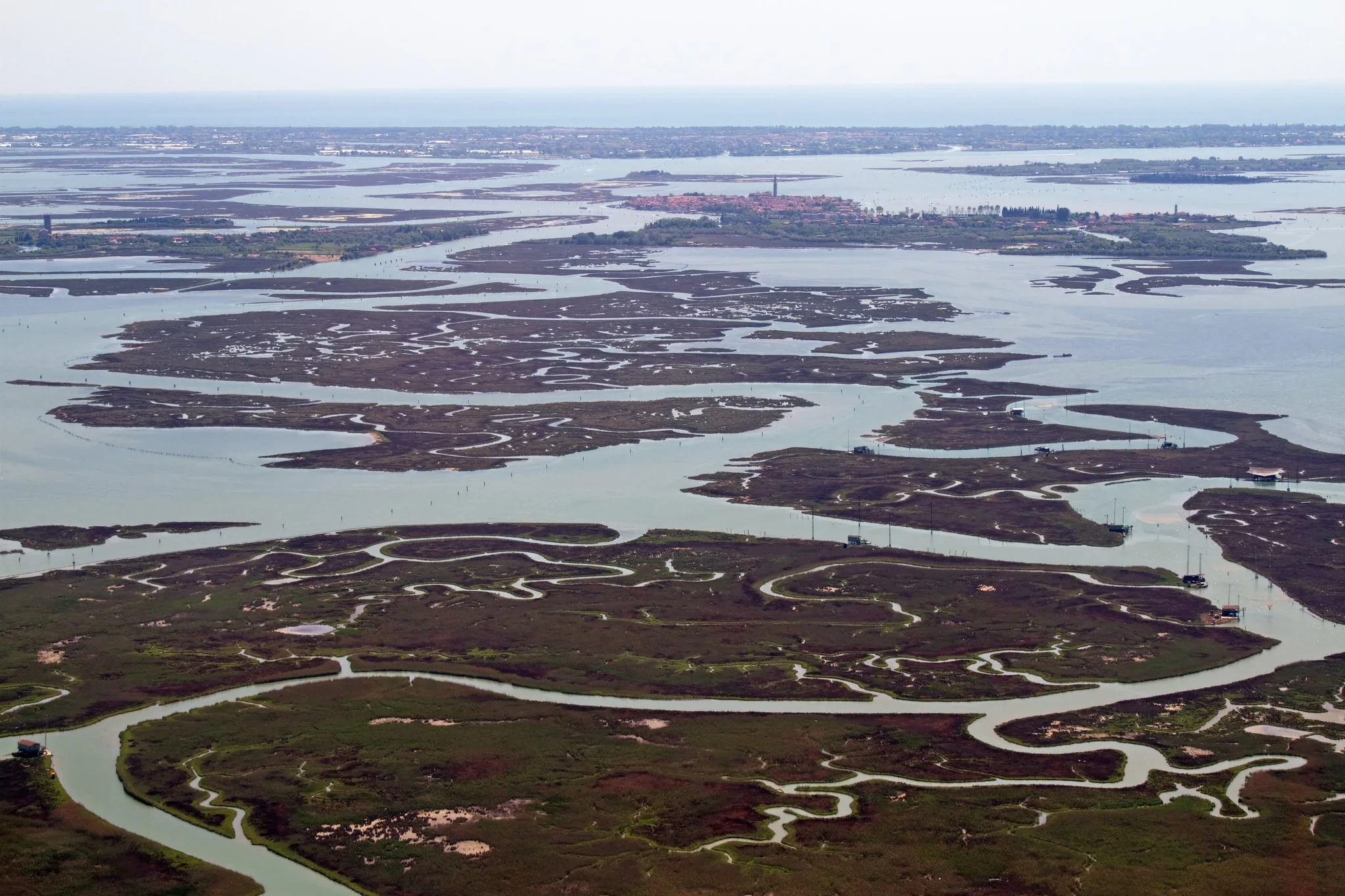Venice
A floating masterpiece
There's no place on earth like Venice. The city built on the waters of the Adriatic Sea is dreamlike with its elaborate architecture, art-filled palaces, a palpable history that dates back over 1,000 years and, of course, its network of picturesque canals. Venice consists of a tight cluster of islands around the Grand Canal, an iconic waterway plied by gondolas, water taxis, and canal boats.
The Venetian Lagoon is an enclosed bay of the Adriatic Sea, in northern Italy, in which the city of Venice is situated. Its name in the Italian and Venetian languages, Laguna Veneta - cognate of Latin lacus, "lake“ - has provided the english name for an enclosed, shallow embayment of salt water, a lagoon. There are a total of 117 small islands in the lagoon, some inhabited but many of them little more than extensive mudbanks. The principal inhabited islands are as follows: Torcello, Burano, Murano, Mazzorbo, Sant’Erasmo, San Michele, Isola le Vignole.
Burano, the picturesque old town is known for its brightly colored fishermen's houses and its casual eateries serving seafood from the lagoon. The Museo del Merletto has exhibits on the development of lace-making in the area, and shops sell lace products like linens and clothes, as well as the local butter cookies called "bussolai buranei." The ancient Chiesa di San Martino has a leaning 17th-century bell tower.
The city of Venice has been the inspiration for poets, artists, musicians and travellers for nearly a thousand years. Today the city and the islands of its lagoon attract an astonishing 20 million visitors every year to marvel at Venice’s unique architecture, admire the rich artistic legacy of works by painters such as Giorgione, Titian, Tintoretto and Canaletto, or sample the city’s 400-year old musical tradition with works by renowned composers such as Monteverdi, Gabrieli and Vivaldi. Of course, few of the 20 million visitors can experience Venice in the way that the cruising yachtsman can, for nothing beats the thrill of entering the lagoon of ‘La Serenissima’ in your own vessel, just as almost 20 generations of sailors have done since the return from his 20 years of exploration by Marco Polo around 1295 AD.





